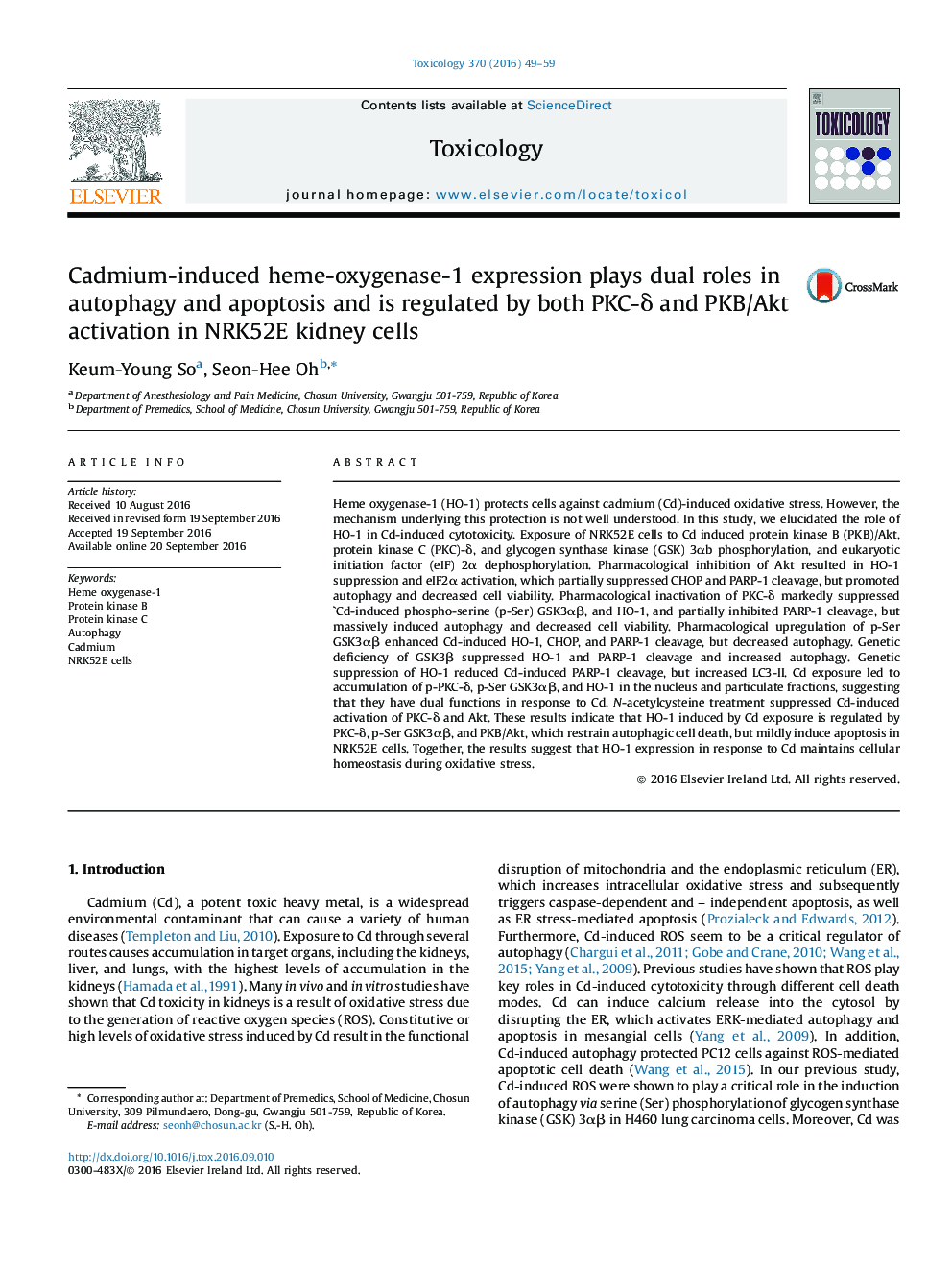| Article ID | Journal | Published Year | Pages | File Type |
|---|---|---|---|---|
| 5561941 | Toxicology | 2016 | 11 Pages |
Heme oxygenase-1 (HO-1) protects cells against cadmium (Cd)-induced oxidative stress. However, the mechanism underlying this protection is not well understood. In this study, we elucidated the role of HO-1 in Cd-induced cytotoxicity. Exposure of NRK52E cells to Cd induced protein kinase B (PKB)/Akt, protein kinase C (PKC)-δ, and glycogen synthase kinase (GSK) 3αb phosphorylation, and eukaryotic initiation factor (eIF) 2α dephosphorylation. Pharmacological inhibition of Akt resulted in HO-1 suppression and eIF2α activation, which partially suppressed CHOP and PARP-1 cleavage, but promoted autophagy and decreased cell viability. Pharmacological inactivation of PKC-δ markedly suppressed Cd-induced phospho-serine (p-Ser) GSK3αβ, and HO-1, and partially inhibited PARP-1 cleavage, but massively induced autophagy and decreased cell viability. Pharmacological upregulation of p-Ser GSK3αβ enhanced Cd-induced HO-1, CHOP, and PARP-1 cleavage, but decreased autophagy. Genetic deficiency of GSK3β suppressed HO-1 and PARP-1 cleavage and increased autophagy. Genetic suppression of HO-1 reduced Cd-induced PARP-1 cleavage, but increased LC3-II. Cd exposure led to accumulation of p-PKC-δ, p-Ser GSK3αβ, and HO-1 in the nucleus and particulate fractions, suggesting that they have dual functions in response to Cd. N-acetylcysteine treatment suppressed Cd-induced activation of PKC-δ and Akt. These results indicate that HO-1 induced by Cd exposure is regulated by PKC-δ, p-Ser GSK3αβ, and PKB/Akt, which restrain autophagic cell death, but mildly induce apoptosis in NRK52E cells. Together, the results suggest that HO-1 expression in response to Cd maintains cellular homeostasis during oxidative stress.
